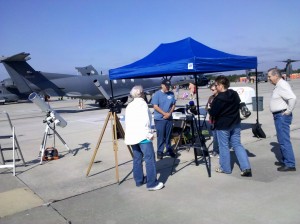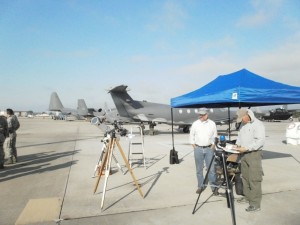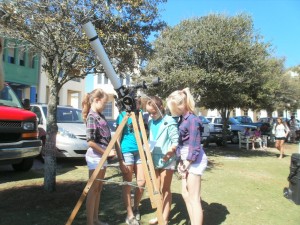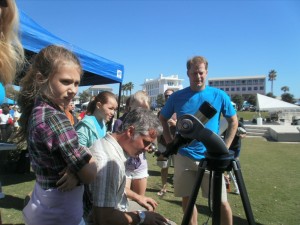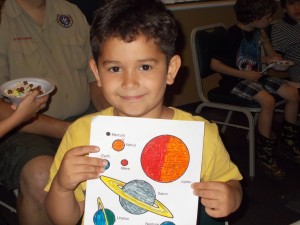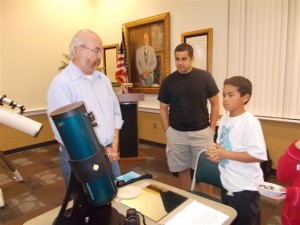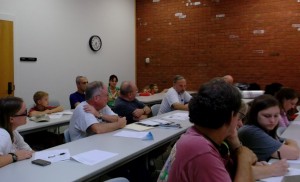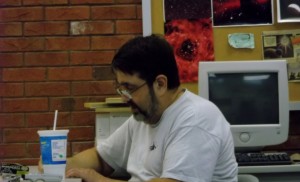Hurlburt Field does not get to host an open house very often and by the time we saw the newspaper article announcing a 2012 event, it left little time to arrange participation. We made a quick call to our Hurlburt Field Library contact hoping she could find us a contact point. She did. After several emails to Capt. Duncan explaining who we were, what we wanted to do and why, we received permission to join the event.
Saturday morning started with a few low clouds and a quick pass through security. But by the time we checked in with Capt. Duncan, the clouds had cleared. He pointed out our display location on the ramp at the end of a long line of gray painted aircraft. It was an excellent site; no building shadows or trees (long story). We set up the pop-up and before we even got the scopes setup, we had guest observers.
Dave Halupowski brought his classic Unitron to demonstrate solar projection viewing along with a 60mm Coronado solar telescope borrowed from club member Dennis Hausch. Tom Haugh brought his 6″ Meade with a white light filter to provide another way to safely view the sun. The sun provided a couple of sun spot groups as well as several prominences along the solar limb.
Even though there was no flying scheduled the crowd was large and a steady stream of viewers kept us busy all day. Ken Leone stopped by and lent a hand, but we decided that he didn’t need to unload and haul all his gear out on to the flight-line.
The open house was a well run event and we had a great time. We would like to thank Sabrina for the footwork getting us a contact name. We would also thank Capt. Duncan for his effort so late in the timeline getting us into the event.
